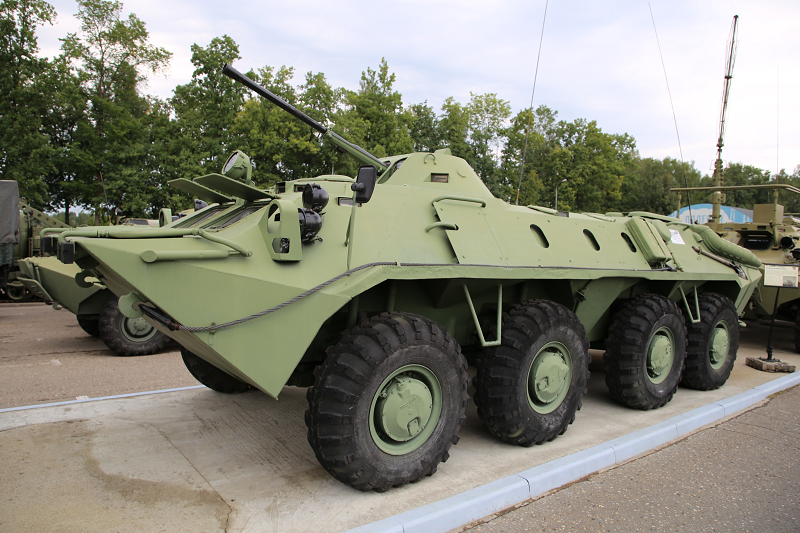BTR-70. The BTR-70 was developed in 1971 in the design office of the Gorky Automobile Plant by I. Mukhin in order to improve the characteristics of the BTR-60. The initial production was at GAZ, however, later in 1981 the production was transferred to the Arzamas auto parts plant. Modifications of this model are carried out to the present.
Vadim Zadorozhny’s Museum of Equipment, Moscow
Country of origin: USSR
Issued: no data
Weight: 11.5 t
Power: 2×120 hp
Speed: 80 km / h
Crew: 2 + 8 people
The BTR-70 is powered by two petrol engines. Early production vehicles used 115 hp GAZ-69B 6-cylinder engines, but most vehicles have now been retrofitted with the more powerful ZMZ-49-05 V-8 engines. The vehicle is fully amphibious, propelled when afloat by a single water jet mounted at the rear of the hull. To prepare the vehicle for water, the driver erects a trim vane and switches on the bilge pumps from within the vehicle.
The standard equipment includes a central tire-pressure regulation system that allows the driver to adjust the tire-pressure to suit the terrain being crossed. Also fitted is an R-123M radio set and an R-124 intercom. The driver’s optical equipment consists of three TNPO-115 vision blocks and a TNP-B day vision device, which can be replaced by a TVNO-2B night vision device.
The commander also has three TNPO-115s and either a TPKU-2B day sight or a TKN-1S night sight accompanied by an OU-3GA-2 infra-red search light. The turret is fitted with a PP-61AM (or 1PZ-2) periscopic sight for the gunner and the infantry group in the troop compartment is provided with TNP-B devices. The BTR-70 also has an FVU NBC filter system and a DK-3B detection device.
The armaments consist of a KPVT heavy machine gun with 500 rounds and a coaxial 7.62 mm PKT machine gun with 2,000 rounds. Also on board are two “Igla” or “Strela-3” MANPADS, and optionally two AGS-17 grenade launchers at the expense of two infantry men.











